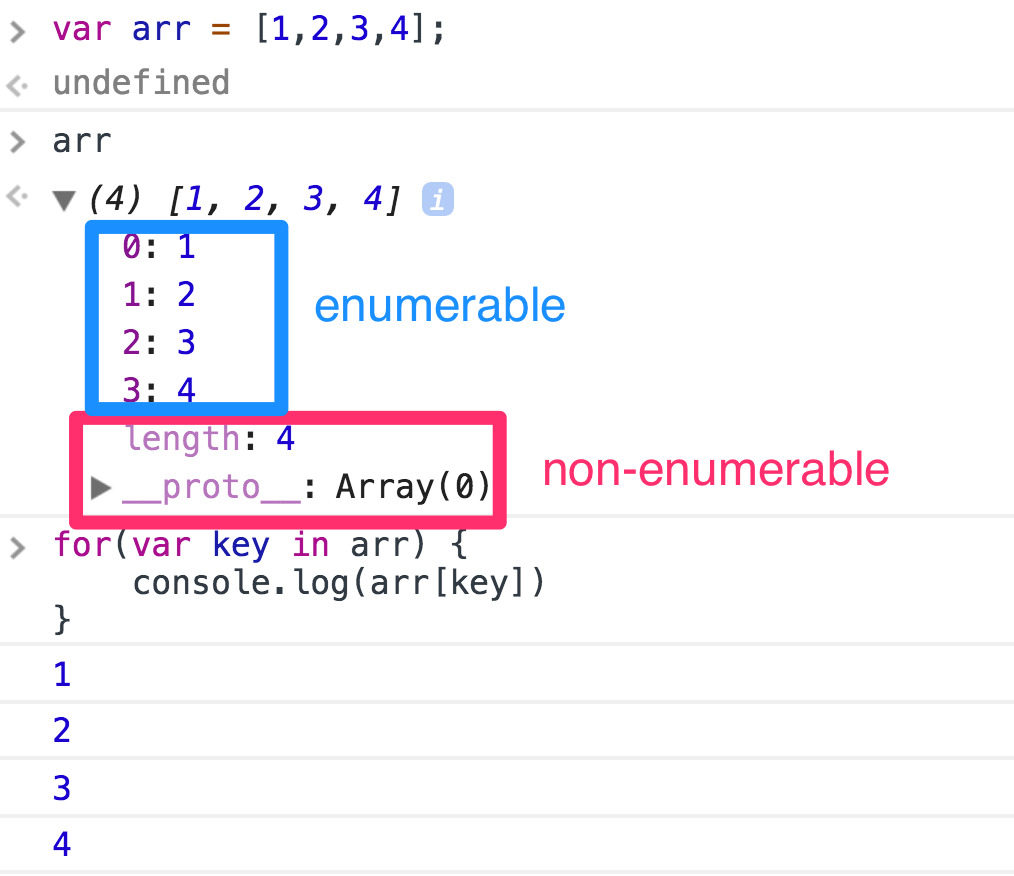This rabbit hole began as I was investigating wp, the global object for WordPress’ JavaScript API. If you open up the console on this page and type wp, you’ll see a couple of entries. If you do that while viewing a page in the admin, you’ll see a whole lot more and on a page running Gutenberg, you’ll see something like this:

Scrolling down towards the end of the blocks property, the one I was investigating, I saw something strange:

It looked like each method inside of blocks was duplicated, dimmed, and prefixed with get. I decided to dive into this rabbit hole, and started with:
Why are some properties dimmed in a console.log‘d object?
I’d seen dimmed properties before, and I always thought of them as the properties that are there by default, or ones I’m not supposed to manipulate. It turns out that’s pretty much correct. The technical term for that is that dimmed properties are non-enumerable vs. enumerable properties.
What? This StackOverflow post both identifies the circuitousness of the MDN answer to this question and provides a relatively satisfactory answer. The thing is, sometimes you don’t want every property in an object to be acknowledged when you are looping through an object or an array, and enumerability is the technical word for that.
Spoiler alert: deep down, an array is an object! Learn more about the built-in data types in JavaScript from my spirit guide, Kyle Simpson.
An array is a great example of what’s enumerable and what’s non-enumerable. When you console.log an array, you will see a property for length as well as the expected array entries. We don’t assign the length property ourselves, it is provided by JavaScript, and it doesn’t print when we loop through the entirety of the array.
length is non-enumerable:

This rabbit hole could go much much deeper, but for now I need to get back to my research and figure out what that get prefix before the blocks means (something to do with getters and setters, I think).
But before I go, a shoutout to the work of Safia Abdalla who blogs about great little development tidbits. Her curiosity and gusto for blog posts are contagious!
Lastly, these resources helped me out:
- JavaScript properties: inheritance and enumerability from 2ality
- The for…in loop from Chris Ferdinandi

One response to “Enumerability in JavaScript, or “why some properties are dimmed in a console.log””
If you’re up for a whopping near 12-hour online course on the weirdness of JavaScript, I can’t emphasize enough how invaluable this video series by Tony Alicea is, not only in terms of learning JavaScript but also simply as a top shelf tutorial in and of itself. I still go back to reference this thing and watch large portions of it from time to time. It’s on Udemy for some price but the first 3.5 hours of it are free on Youtube. He goes into all sorts of stuff like this.
https://www.udemy.com/understand-javascript/learn/v4/overview
https://www.youtube.com/watch?v=Bv_5Zv5c-Ts